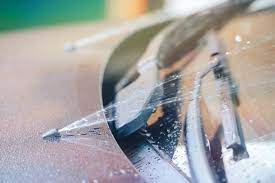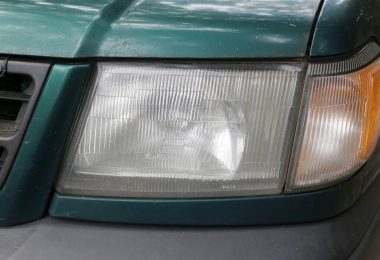Tyres are a very important part of your car. They are responsible for ensuring that you have a smooth ride, and if they are in good shape, it is likely that you will not have any issues with them at all. However, there can be instances when your tyres become worn out or damaged. This can cause bulges in the middle of your tyre which may pose danger to other vehicles on the road as well as yourself.
It can also be frustrating to discover a bulge in your tyre, especially if you have an important trip planned. A bulge could indicate a problem with your vehicle that could be potentially dangerous. Fortunately, it’s possible to diagnose what caused the bulge and make sure it doesn’t happen again. In this article we will look at some of the most common causes of tyre bulges and how best to prevent them from happening again in future
Very old tyres
The most common cause of bulge in tyre is old age. The rubber of tyres looses its elasticity with time and hence becomes brittle, which makes it more vulnerable to damage and puncture. The age factor must always be kept in mind while examining the tyre for damage or bulges. Therefore, it is very important to periodically check your car’s tyre pressure as well as its condition. Read Also : Symptoms of Bad Tires
If you have any doubts about the safety of your tyres or have noticed a bulge on one or more tyres then do not drive your vehicle until it has been checked by an expert mechanic who can determine whether there are any hazards associated with this situation.
Slow puncture
Slow puncture is a slow leak caused by a small hole in the tyre. This type of puncture may be caused by a sharp object, such as glass or metal. The damage to the tyre will be very small and not visible from the outside. Slow punctures are more common if you drive on rough roads with lots of stones and other debris that can get into your tyres. If you have this kind of damage, it’s recommended that you get a full inspection of your tyres at least once every six months as well as regular wheel alignments (every 6 months).
To determine the cause of a tyre bulge, you have to look at a few factors. The most common causes are:
Tyre pressure – If the pressure is too high, it will put more stress on the tread, which will eventually cause a flat spot or bulge. Check your tyres regularly and keep them at the recommended tyre pressure (typically found on a sticker inside your vehicle). Read Also : Tips on How to Maintain Your Automobile
Tyre wear – Worn tyres are more susceptible to damage and therefore more likely to develop a bulge in their sidewall. To avoid this problem, replace tyres before they reach their legal limit for wear (3mm or 2/32nds of an inch).
Age – As tires age with use, they become brittle and less able to withstand normal use; this can lead to cracks or splits that allow air inside which may result in bulges developing due to internal air pressure buildup. Tires should be rotated regularly so that new areas of rubber under the tread are exposed; this prevents uneven wear patterns from developing over time — one way this occurs is when there’s only one side of tread left before reaching legal replacement limits but hasn’t yet reached them yet because only half its surface area has been used up yet
Bulge in tyres can be caused by several reasons, some of which are listed below:
Tyre pressure: If there is a tyre bulge on your car and the tyre has been deflated, it’s likely that the cause is due to low tyre pressure. You should check your car’s manual or ask an expert mechanic to ensure that the right amount of air has been pumped into your tyres before driving on them again.
Tyre wear: Worn out tyres with thin walls can cause bulges as well as defects like splits and cracks in the rubber. In addition, high mileage may also result in uneven wear patterns that can lead to abnormal bulges appearing on certain parts of the tread pattern (e.g., shoulder patches). Check out our section about tyre repair for more information about this topic!
Overcuring: The tyre may have been overcured during the manufacturing process, which would cause it to expand and bulge when inflated. An example of this is if you have a puncture but don’t take your car to a garage to get it repaired because you’re not sure what’s wrong with it yet – maybe you think that fixing the puncture yourself is something anybody could do? But then when you do get around to repairing your tyre yourself, guess how much damage has been done? Yeah… now look at how big and bulbous your tyres are! You probably didn’t even need as much air as usual because they were already pumped up so far past their recommended pressure levels due to being overinflated during manufacture (you should always check that all tyres’ pressures are correct before driving off).
Tire age: As tyres age through regular use over time (and especially if they’re not rotated regularly), their sidewalls become weaker and more susceptible to damage from things like potholes and curb strikes; this leads them towards developing flat spots or even bursting open!
The most common cause of tyre bulge is overloading. This can be caused by fitting wheels with a different size or type of tyre, or using incorrect pressure in your tyres. However, it is important to remember that overloading will also cause additional wear and tear on your vehicle and may also lead to premature failure of other parts such as brakes and suspension components.
Conclusion
A bulge in your tyre is a sign that you need to have it checked by a professional. It could be a minor problem, like an old tyre or slow puncture, but it could also be something more serious like damage to the tyre itself or an underlying issue with your car’s suspension system. If you find that your tyres are showing signs of being damaged, then it’s important that you get them checked as soon as possible before they become dangerous for either yourself or other road users.







